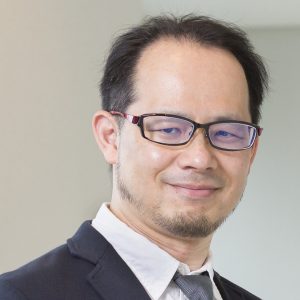 |
-As an organization that supports universities in the age of digital transformation, data science, and artificial intelligence-
The Osaka University Cybermedia Center was established in April 2000 as a national joint-use facility to support the university’s information infrastructure by reorganizing the former Large-scale Computation Center, the former Information Communication Center, and the attached University Libraries(in part).
Over the past 20 years, with the cooperation of many users and related organizations, including private companies, the organization has developed into an organization with an impressive ICT and HPC infrastructure that includes two high-performance computing (HPC) systems, SQUID and OCTOPUS, as supercomputers, as well as ONION, a data aggregation platform for further development in the utilization of large-scale highly classified data.
In building the infrastructure, we have constructed and utilized an IT core building that emphasizes air-conditioning efficiency as a dedicated structure for housing this equipment. We still need to consider the SDGs in the development of this infrastructure.
Also, utilizing the framework of the Innovative High-Performance Computing Infrastructure (HPCI), which is operated based on 13 domestic universities and research institutes with such computational and information resources, and The Joint Usage/Research Center for Interdisciplinary Large-scale Information Infrastructures (JHPCN), which consists of 8 constituent centers, One of the crucial roles of the Center is to contribute to the improvement of Japan’s scientific and technological research capabilities by making the Center widely available not only to researchers at universities and research institutes inside and outside the university, but also to researchers at companies.
In addition to the maintenance, management, and provision of services for such hardware, the Center is currently developing a variety of services in all areas of ICT, including data analysis, software application services, artificial intelligence (AI) such as machine learning, and digital transformation (DX).
For example, we have established our user support system called the Large-Scale Computing System Open User Support System, and in FY2021, we launched a new support framework for artificial intelligence research and began supporting researchers in population skills technology.
In addition, to help promote DX at Osaka University, a project to accelerate the realization of the OU (Osaka University) Master Plan 2027, a medium- to long-term management vision, was launched in FY2023. Through this project, we will focus on themes such as Beyond5G, which enables high-speed and flexible network connectivity regardless of location; Metaverse, which provides an education and research environment free from physical and geographical constraints; and Data Analytics Service, which provides a unified research environment that has been managed and operated by individual laboratories and individuals. We are also promoting the introduction of IDs that enable flexible authentication, other mechanisms, and consistent labor-saving measures from entrance/exit systems to grade management.
These activities will accelerate and promote the University’s DX in all aspects of research, education, and administration, help improve the capabilities of all members of the University, including faculty, staff, and students, and serve as an essential foundation for the University’s broad connection with the rest of the world.
In this way, the Center is committed to significantly enhancing the research and educational capabilities of Osaka University and science and technology in Japan, and we will continue to do so with even greater vigor in the future.
We look forward to your continued support in the future.
Director, Cybermedia Center, Osaka University
Daisuke Furihata

